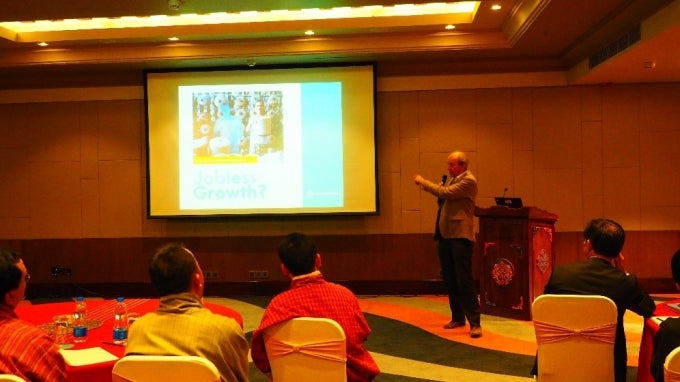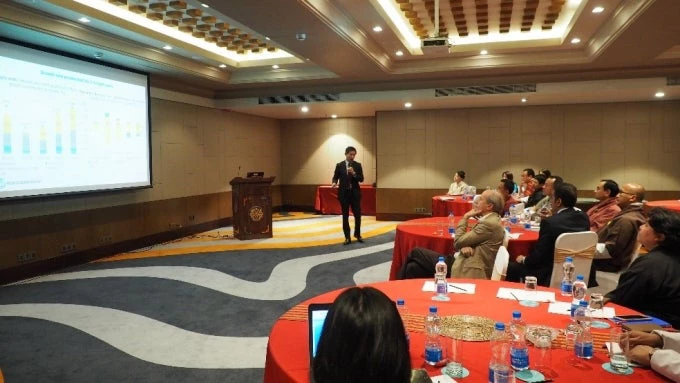
“The main driver of growth in Bhutan continues to be the hydropower sector, but electricity generation does not create job,” said a senior government officials attending the presentation of The World Bank’s South Asia Focus on Jobless Growth on June 28th in Thimphu. The report was presented by Martin Rama, World Bank South Asia Region Chief Economist and was attended by senior government officials, parliamentarians and development partners. The presentation alongside the launch of Bhutan Development Update was a great opportunity for the policy makers to better understand and synthesize Bhutan and the South Asia region’s development opportunities.
In the case of Bhutan, it seems clear that growth alone will not allow it to attain higher employment rates as enjoyed by some other developing countries.
"More than 1.8 million young people will reach working age every month in South Asia through 2025 and the good news is that economic growth is creating jobs in the region,” said Martin Rama,. “But providing opportunities to these young entrants while attracting more women into the labor market will require generating even more jobs for every point of economic growth.”
The report informs that the fall in employment rates has been much faster in the region particularly in India, Bhutan and Sri Lanka and especially for women, risking foregoing the demographic dividend. While it is evident that the number of working age people is increasing, the proporation who are at work has declined owing to prioritization of the households to education, health and other commitments with increasing level of income.

The continued delays in the completion of the ongoing mega hydropower projects is expected to affect growth in the near future but the country would greatly benefit from a more robust private sector to create more jobs for its youth. With the working age population increasing by 830 people every month, Bhutan will therefore need to create 6,000 jobs a year to maintain its current employment rate.
The World Bank’s Investment Climate Assessment of 2016 identified three binding constraints for private sector development: access to finance, access to skilled labor and access to external markets. However, the increasing number of unemployed youth in Bhutan is not only due to the weak presence of the private sector but also due to mismatch in the labor market. The World Bank’s 2016 Labor Market Report confirms that the public sector is the ultimate choice for Bhutanese educated youth. In fact, some prefer to stay unemployed if they cannot get public sector employment due to social status considerations.

So has the growth really been jobless for Bhutan? Or is it a case of willing unemployment…is that jobless growth?


Join the Conversation